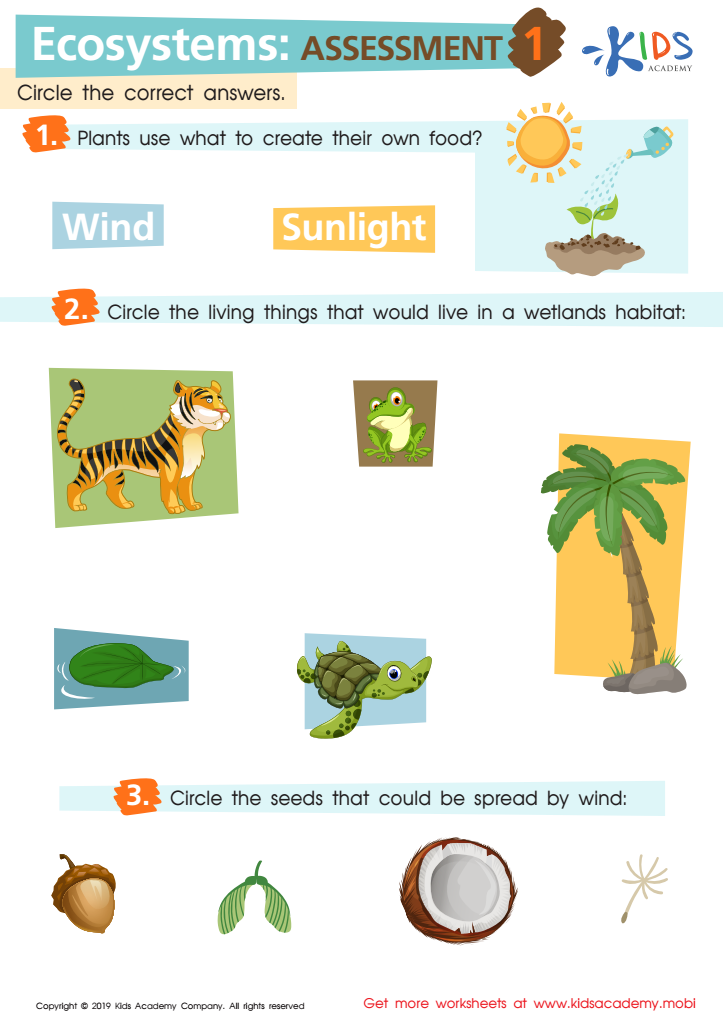Analyzing food chains Worksheets for Kids
1 filtered results
-
From - To


Ecosystems: Assessment 1 Worksheet
Question/Answer
How to train the Analyzing food chains skill in Grade 2 students learning about Our Planet and Environment?
To train Grade 2 students in analyzing food chains, use simple, interactive activities like drawing or constructing food chains with pictures of plants, herbivores, and carnivores. Start with discussions about what these animals eat, followed by guided exercises where students arrange organisms in the correct order. Incorporating storytelling and role-play can enhance understanding of the interdependence within ecosystems.
Why is the Analyzing food chains skill important for Grade 2 students?
The Analyzing food chains skill is important for Grade 2 students because it nurtures their understanding of natural relationships, highlights the importance of each organism in the ecosystem, and fosters critical thinking by observing how living things interact. This foundational knowledge builds awareness about biodiversity and environmental conservation, essential for cultivating responsible attitudes towards nature from a young age.
How to test a Grade 2 student’s Analyzing food chains skills?
To test a Grade 2 student's analyzing food chains skills, use a simple worksheet with pictures of different animals and plants. Ask the student to draw arrows to connect the organisms in the correct order of who eats whom, starting from the producer (plant) to various consumers (animals).
 Assign to the classroom
Assign to the classroom












